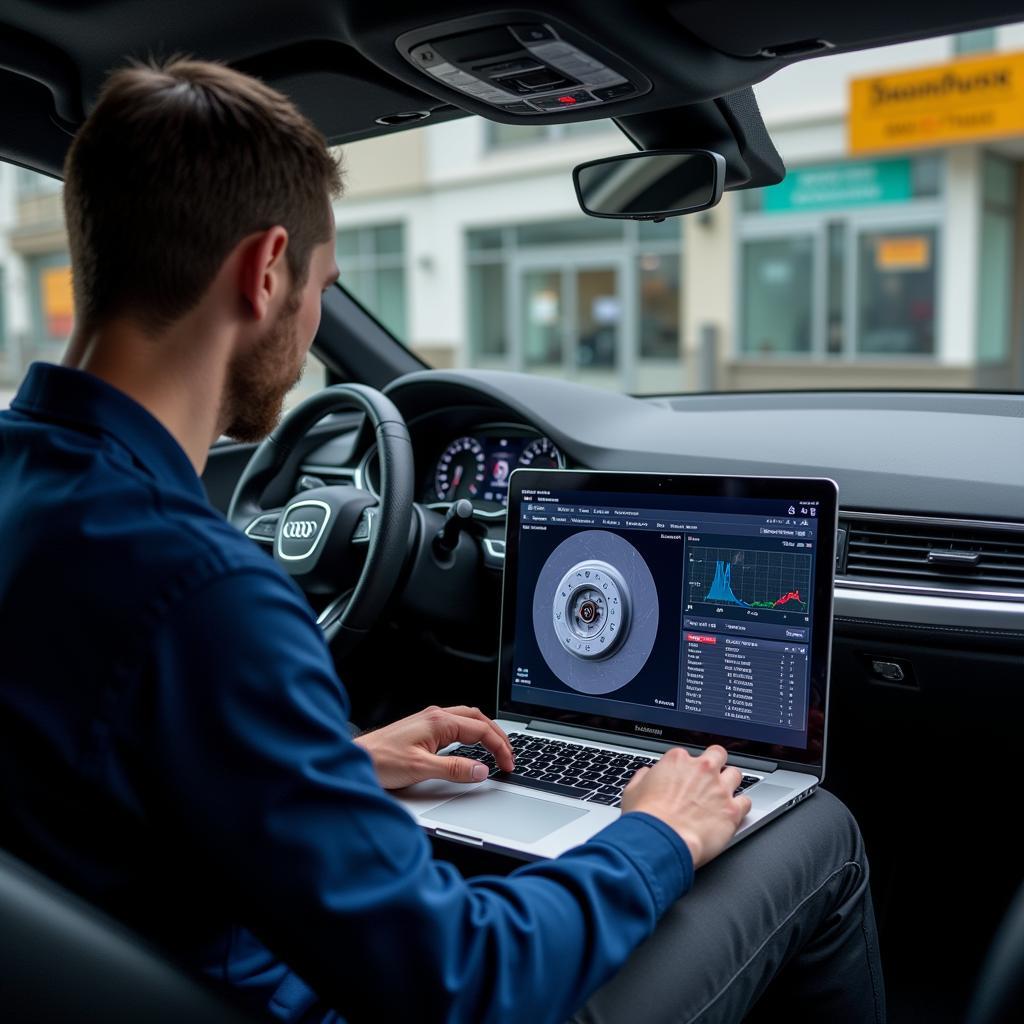The brake warning light on your 2016 Audi A3 can be a bit of a scare, especially if you’re not sure what it means. It could indicate something as simple as low brake fluid or something more serious like a problem with your brake system. Fortunately, in many cases, the brake warning light can be reset by following a few simple steps.
Understanding the Brake Warning Light
The brake warning light is designed to alert you to potential issues with your braking system. It can be triggered by a variety of factors, including:
- Low brake fluid: This is the most common reason for the brake warning light to come on. If your brake fluid level is low, it’s important to top it up as soon as possible.
- Faulty brake pad or shoe sensors: These sensors are located on the brake pads or shoes and alert you when the brake pads are worn down to a dangerous level.
- Brake system malfunction: This could include problems with the brake calipers, master cylinder, or other components of your braking system.
- Electrical issues: A faulty brake light switch or a wiring problem can also trigger the brake warning light.
Resetting the Brake Warning Light
If the brake warning light is on, you should always have your car checked by a qualified mechanic to ensure there’s no underlying problem with your braking system. However, in many cases, the light can be reset by following these steps:
- Check the brake fluid level. Make sure that the brake fluid level is at the appropriate level in the reservoir. If it’s low, add brake fluid to the reservoir.
- Check the brake pads and shoes. Ensure that the brake pads and shoes are not worn down to the point where they are triggering the sensors.
- Use the Electronic Parking Brake. If you have an electronic parking brake, you can try resetting the brake warning light by engaging and disengaging the parking brake several times.
- Use an OBDII Scanner. You can use an OBDII scanner to read the fault codes stored in your car’s computer. Once you have the fault code, you can look it up online to determine the cause of the warning light.
Tip from John, a certified Audi mechanic: “If you’re not comfortable resetting the brake warning light yourself, take your car to a qualified mechanic. They can diagnose the problem and reset the light properly.”
When to See a Mechanic
While you can try to reset the brake warning light yourself, there are times when it’s best to see a mechanic. If the following conditions are met, it’s best to call a mechanic:
- The brake warning light is on and the brakes feel spongy or weak.
- The brake pedal is hard to press.
- You hear a grinding noise when braking.
- The brake fluid level is low, and you can’t figure out why.
- You have a check engine light on as well.
John, the Audi mechanic, adds: “Don’t ignore the brake warning light. It’s there for a reason, and it’s important to get the problem checked out as soon as possible.”
FAQ
Q: Is it safe to drive with the brake warning light on?
A: It’s not recommended to drive with the brake warning light on. While it might be a minor issue, it could also signal a more serious problem with your brake system.
Q: What if I reset the brake warning light, and it comes back on?
A: If the light comes back on after you’ve reset it, there is likely a problem with your brake system. Take your car to a mechanic to have it diagnosed and repaired.
Q: Can I reset the brake warning light with a simple button?
A: In some vehicles, you can reset the brake warning light with a button located on the dashboard or near the steering wheel. However, the 2016 Audi A3 doesn’t have a button to reset the light. The steps outlined above are the best way to address the issue.
Q: Is there a specific way to check the brake fluid level on an Audi A3?
A: Yes, the brake fluid reservoir is located on the passenger side of the engine compartment. It’s usually a small plastic container with a cap that can be easily removed to check the fluid level. Be sure to check the fluid level regularly and add fluid as needed.
Q: How often should I check my brake pads and shoes?
A: It’s recommended to check your brake pads and shoes every 6,000 to 12,000 miles, or more frequently if you drive in harsh conditions. You can also have a mechanic check them during your regular oil changes or tune-ups.
Q: What is the best way to keep my brakes in good condition?
A: The best way to keep your brakes in good condition is to maintain them properly. This includes regularly checking the brake fluid level, brake pads, and shoes, and having your brakes inspected by a qualified mechanic. It’s also a good idea to replace the brake fluid every two years. By following these simple tips, you can help ensure that your brakes are working properly and keep you and your passengers safe.

